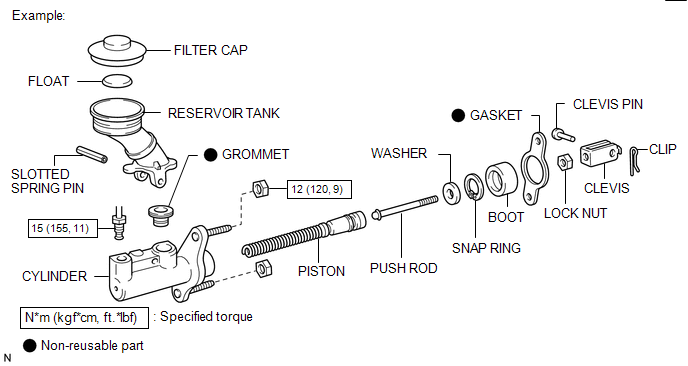Toyota 4Runner: How To Use This Manual
General Information
GENERAL INFORMATION
1. GENERAL DESCRIPTION
(a) This manual is written in accordance with SAE J2008.
(1) Diagnosis
(2) Removing/Installing, Replacing, Disassembling/Reassembling, Checking and Adjusting
(3) Final Inspection
(b) The following procedures are omitted from this manual. However, these procedures must be performed.
(1) Use a jack or lift to perform operations.
(2) Clean all removed parts.
(3) Perform a visual check.
2. INDEX
(a) An alphabetical INDEX section is provided at the end of the manual as a reference to help you find the item to be repaired.
3. PREPARATION
(a) Use of Special Service Tools (SST) and Special Service Materials (SSM) may be required, depending on the repair procedure. Be sure to use SST and SSM when they are required and follow the working procedure properly. A list of SST and SSM is in the "Preparation" section of this manual.
4. REPAIR PROCEDURES
(a) A component illustration is placed under the title where necessary.
(b) Non-reusable parts, grease application areas, precoated parts and torque specifications are noted in the component illustrations.
- The following illustration is an example.

(c) Torque specifications, grease application areas and non-reusable parts are emphasized in the procedures.
HINT:
There are cases where such information can only be explained by using an illustration. In these cases, the information is described in the illustration.
(d) Only items with key points are described in the text. What to do and other details are explained using illustrations next to the text. Both the text and illustrations are accompanied by standard values and notices.
|
Illustration |
What to do and where to do it. |
|
Task heading |
What work will be performed. |
|
Explanation text |
How to perform the task. Also has information such as specifications and warnings, which are written in boldface text. |
(e) Illustrations of similar vehicle models are sometimes used. In these cases, minor details may be different from the actual vehicle.
(f) Procedures are presented in a step-by-step format.
5. SERVICE SPECIFICATIONS
(a) SPECIFICATIONS are presented in boldface text throughout the manual. The specifications are also found in the "Specifications" section for reference.
6. TERM DEFINITIONS
|
CAUTION |
Possibility of injury to you or other people. |
|
NOTICE |
Possibility of damage to components being repaired. |
|
HINT |
Provides additional information to help you perform repairs. |
7. INTERNATIONAL SYSTEM OF UNITS
(a) The units used in this manual comply with the International System of Units (SI) standard. Units from the metric system and the English systems are also provided.
- Below is an example.
Torque:
30 N·m {310 kgf·cm, 22 ft·lbf}
 Electronic Circuit Inspection Procedure
Electronic Circuit Inspection Procedure
ELECTRONIC CIRCUIT INSPECTION PROCEDURE
1. BASIC INSPECTION
(a) WHEN MEASURING RESISTANCE OF ELECTRONIC PARTS
(1) Unless otherwise stated, all resistance measurements should be made at an
ambient ...
 Identification Information
Identification Information
Vehicle Identification And Serial Numbers
VEHICLE IDENTIFICATION AND SERIAL NUMBERS
1. VEHICLE IDENTIFICATION NUMBER
(a) The vehicle identification number is stamped on the vehicle identification ...
Other materials about Toyota 4Runner:
Switch Failure (B2342)
DESCRIPTION
This DTC is stored when the sliding roof drive gear sub-assembly (sliding roof
ECU) detects that the sliding roof switch in the map light assembly is stuck for
30 seconds or more.
DTC Code
DTC Detection Condition
...
Shifting between H4L and L4L
Shifting from H4L to L4L
Stop the vehicle completely and
continue to depress the brake pedal.
Shift the shift lever to N.
Push the “UNLOCK” button and then push and turn the fourwheel drive control
switch to L4L.
Maintain this condition until t ...
